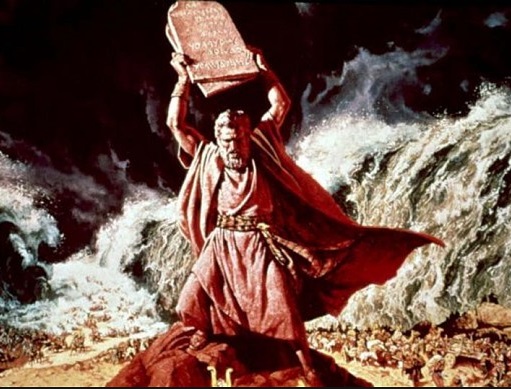In an age of visually oriented communications such as TV, movies and the internet, the power of symbols is not lost on content makers such as advertisers and movie producers. This is particularly true when you combine pop icons with these symbols to make a lasting impression. Case in point: diamonds. The point was indelibly etched in the courting rule book when the iconic beauty Marilyn Monroe sang:
Since then, aside from the numerous remakes2 from beauties trying to channel the appeal and success of Marilyn, we’ve had regular reminders that “diamond’s are a girl’s best friend.” They come right around this time of year – in time for the Christmas shopping season, to reminded you that if you really want to express your love to a lady, the proper way to do it is with a diamond. This year it was done with a twist – taking a form of nature documentary and using penguins instead of people3, but the message was the same. There are multiple lessons for Christians here – aside from the well known fact that advertisers can use beautiful women to sell their wares. They are as follows: 1. God first used signs & symbols, and continues to use them During the creation week, God said:
And as the children of Israel were about to enter the promised land, God gave them these instructions:
So God was the first to use signs and symbols.4 And of particular interest is his command to his people to have a symbol of his word, his instructions to them for proper living displayed prominently both on their person , and on their houses. This command was fulfilled with the placing of tephillim (Phylacteries in the New Testament (Matt 23.5)) on the wrist and forehead; and a mezuzah on the house. Why? Because what advertisers have learned, God already knew: the power of a constant reminder in the form of a symbol. His purpose is clear: to impress the importance of His word upon His people, God used symbols – the tephillim and mezuzah – which both symbolized his word and contained portions of it. Another symbol, mentioned briefly in my article Physical Evidence that Jesus Existed, is that of the Chi Rho (the first two Greek letters in “Christ”). History records how God used the symbol to inspire General and soon to be Roman Emperor Constantine to trust in Christ, not the pagan gods on the eve before what would be a decisive battle for the victor. Constantine’s victory at the Mulvian bridge over his rival Maxentius led to Constantine extending his power, allowing him to legalize Christianity in the Roman empire, ending (eventually) the widespread persecution of Christians and setting the stage for accelerated growth of the church. A final example: Jesus indicated that his return will be preceded or accompanied by “the sign of the Son of Man” (Matt 24.30). Thus signs and symbols have been in use by God to further the faith since the beginning, and continue to be in use. Clearly we have as a precedent God’s own use of signs and symbols in furtherance of the faith. 2. God redeems and claims symbols for his own use The cross is arguably the most recognized symbol in the world. For Christians it represents Christ’s passion and redemption, hope and eternal life. Even for non-believers it is a well recognized symbol of Christianity. But it was not always that way. The cross is after all an instrument of death. And not just any death, a death of torture – a slow death of literally excruciating pain. (The root of excruciate is crux – meaning cross). The cross was used not only to execute, but to intimidate. In that regard it also excelled because it became one of the most feared forms of execution in the ancient world. Even so, God took that instrument of death and torture, and turned it into a symbol of hope, and of the true faith. That transformation from sign of intimation and death; to sign of hope for the faithful has not been lost upon historians: Continue Reading |
Tag Archives: John Baumgardner
A question of authority
What will it take for you to believe? Charlton Heston as Moses – “You are not worthy to receive these commandments” |
||||
|
Twitter is of course home to many ongoing debates, one of which is the ongoing debate between atheists and theists; creationists and materialists – those who adhere to the standard non-supernatural theories of origins for the universe and life. One such debate was brought to my attention with the following tweet:
To the contrary:
This directly contradicts the contention that all fossils are “arranged in evolutionary order”. In fact the situation is worse than that when one considers Continue Reading |

